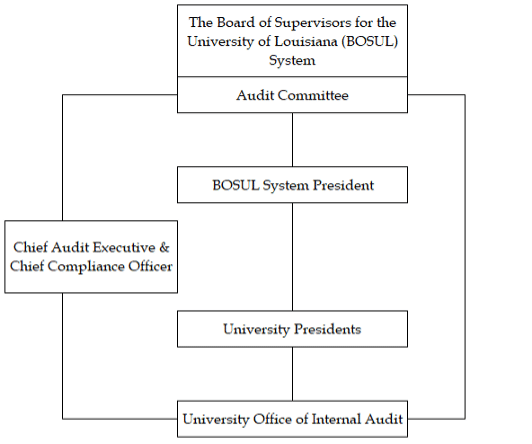About the Office of Internal Audit
Mission Statement
Our mission is to provide independent and objective assurance and advisory services designed to add value and improve McNeese’s operations. The Office of Internal Audit helps the University accomplish its objectives by bringing a systematic, disciplined approach to evaluate and improve the effectiveness of governance, risk management and control processes.
Authority and Purpose
Act 314 of the 2015 Regular Legislative Session (R.S. 17:3351(I) & 36:8.2) provides that any board with an appropriation in the general appropriation bill of thirty million dollars or more shall establish an internal audit function and shall establish an office of the chief audit executive who shall be responsible for ensuring that the internal audit function adheres to the Institute of Internal Auditors (IIA) Global Internal Auditing Standards.
The purpose of internal auditing is to strengthen McNeese’s ability to create, protect and sustain value by providing the Board and McNeese’s management with independent, risk-based and objective assurance, advice, insight and foresight.
The internal audit function enhances the University’s:
- successful achievement of its objectives
- governance, risk management, and control processes
- decision-making and oversight
- reputation and credibility with its stakeholders
- ability to serve the public interest
The University’s internal audit function is most effective when:
- Internal auditing is performed by competent professionals in conformance with The Institute of Internal Auditor’s (IIA) Global Internal Audit StandardsTM, which are set in the public interest.
- The internal audit function is independently positioned with direct accountability to the Board.
- Internal auditors are free from undue influence and committed to making objective assessments.
Organizational Chart

The Office of Internal Audit, on each campus, reports functionally to the Audit Committee through the Chief Audit Executive and Chief Compliance Officer and administratively to their respective President. Prior to each Audit Committee meeting the Chief Audit Executive and Chief Compliance Officer provides a status report of audit activities.

